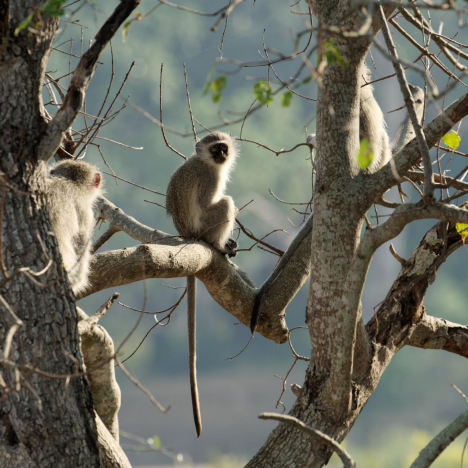Extreme weather events are devastating to humanity. Disasters like Hurricane Helene and the 2025 California wildfires heavily impacted human populations, destroying homes and displacing hundreds of thousands of families. What becomes of our primate cousins, however, when they befall similar fates?
On March 14, 2019, Cyclone Idai made landfall near Beira, Mozambique, devastating the area’s critical ecosystems with high winds and severe flooding. The habitats of many animals were destroyed, and their behavioral patterns were violently altered.
Recently, a team of scientists led by Megan Beardmore-Herd investigated the response and recovery of two populations of primates—gray-footed chacma baboons and vervet monkeys—to the cyclone. Both baboons and vervet monkeys are highly adaptable, living in diverse environments across southeastern Africa, and have advanced cognitive abilities. Vervet monkeys, however, are smaller than baboons. While vervet monkeys weigh approximately ten pounds, baboons weigh about thirty to sixty pounds.
The scientists utilized Gorongosa National Park’s ongoing camera trap survey, with fifty-five cameras over a 115-square-mile area, to detect and collect data from spatial movements of mammalian groups in the area. Beardmore-Herd’s team used this data to compare the behavior of baboons and vervet monkeys in the two years prior to their behaviors following Cyclone Idai. To prevent sampling bias, only independent detections that occurred either on different cameras or at least fifteen minutes apart were considered in Beardmore-Herd’s research. Baboons were detected on all fifty-five cameras, while vervet monkeys were detected on forty-four of the cameras. The lower detection rate of vervet monkeys could be due to their smaller size or their more arboreal lifestyle.
Beardmore-Herd and her team found that, in the first month after the cyclone, the spatial distribution of baboons was significantly different from the distribution in the same month of the two previous non-cyclone years. “Baboons were detected more frequently in areas where flooding was less severe, as compared to matched time intervals in the previous two years,” Beardmore-Herd said. Limited detections of vervet monkeys prevented statistical analysis of their spatial distributions, making interpretation of their response in the first month after Cyclone Idai difficult. By the second month after the cyclone, both mammals had renormalized to the areas they had previously occupied, suggesting that the behavioral flexibility of both mammals helped them navigate the aftermath of the cyclone. “Then, very quickly, we also see that this spatial disruption for the baboons was renormalized, so by the second month after the cyclone, we already see baboons in areas that were previously affected by the flooding,” Beardmore-Herd said.
The implications of Beardmore-Herd’s work can not only help our understanding of primate behavior, but of our own behavior as well. “As a biological anthropologist, I’m always considering the ways in which studying primates can shed light on human origins and evolution, so these two primate species represent particularly compelling models due to their high levels of behavioral flexibility—a key adaptation in humans,” Beardmore-Herd said. As climate change continues to intensify the strength and duration of extreme weather events, studying the responses of primates can offer insight into both their survival and ours in the face of a rapidly changing world.

